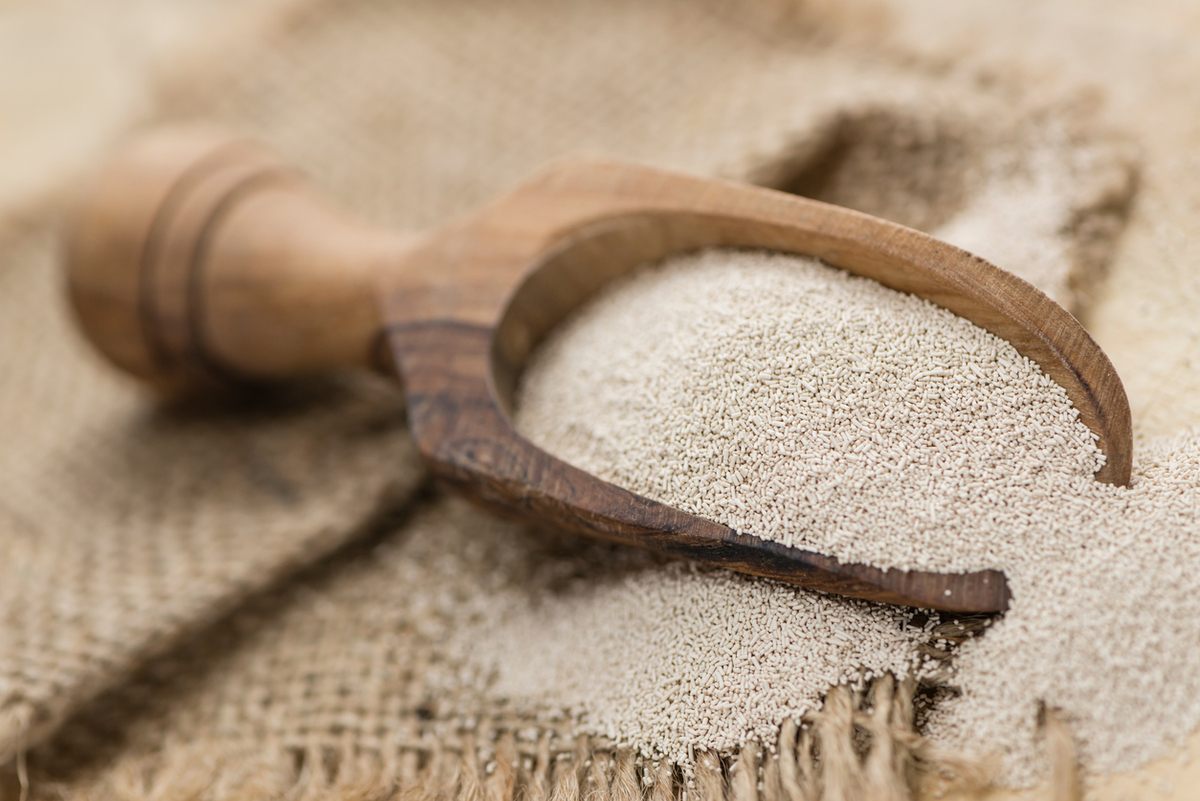
GM Yeast to Produce Valuable Materials from Urine
June 25, 2025| |
Researchers from the Lawrence Berkeley National Laboratory (Berkeley Lab), the University of California (UC) Irvine, and the University of Illinois Urbana-Champaign (UIUC) genetically modified (GM) yeast to take the elements in urine and create hydroxyapatite. The findings of their study, published in Nature Communications, provide a practical mechanism for reducing the cost of wastewater treatment.
The research team engineered a strain of Saccharomyces boulardii, a yeast closely related to the species used in brewing beer and making bread, to create “osteoyeast,” a GM yeast that mimics osteoblasts. Inspired by the growing biotechnology trend called “pee-cycling,” the research team saw an opportunity to expand the global impact of their invention by using urine as a sustainable source of essential minerals.
Yasuo Yoshikuni, head of the DNA Synthesis Science Program at the Joint Genome Institute (JGI), explained that pee-cycling has faced limited adoption due to cost challenges. With the development of osteoyeast, this engineered yeast can produce high-value hydroxyapatite by extracting phosphorus and calcium directly from urine. “If we're able to produce both hydroxyapatite and make nitrogen fertilizer from the ammonia, we could potentially replace a significant portion of total demand of nitrogen; saving energy while also dramatically reducing the costs at wastewater facilities,” Yoshikuni said.
For more information, read the article from Berkeley Lab.
| |
You might also like:
- Engineered Red Yeast Converts Forestry Waste into Valuable Fatty Acid
- Experts Develop Engineered Yeast with Increased Healthy Fatty Acid
- Engineered Yeast to Help Boost Drug Supply
Biotech Updates is a weekly newsletter of ISAAA, a not-for-profit organization. It is distributed for free to over 22,000 subscribers worldwide to inform them about the key developments in biosciences, especially in biotechnology. Your support will help us in our mission to feed the world with knowledge. You can help by donating as little as $10.
-
See more articles:
-
Plant
- COGEM Releases Advice on GM Soybean 305423xDAS-44406-6
- Australian Chickpea Pan-genome to Boost National Chickpea Production
- USask Researchers Discover Pair of Genes that Protect Wheat from Stripe Rust
- EFSA GMO Panel Releases Scientific Opinion on GM Cotton MON 88913
- FSANZ Board Approves Updated Definition of Gene Technology and New Breeding Techniques
- Australia’s Gene Technology Regulator Grants Approval for GM Canola Field Trial
-
Environment
- GM Yeast to Produce Valuable Materials from Urine
- Save the Date: ASCA8 in Manila - September 2025
-
Read the latest: - Biotech Updates (November 12, 2025)
- Gene Editing Supplement (October 29, 2025)
- Gene Drive Supplement (February 22, 2023)
-
Subscribe to BU: - Share
- Tweet

